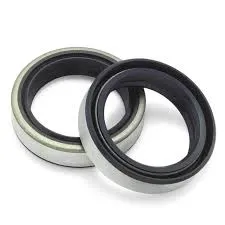9 月 . 15, 2024 19:31 Back to list
High Pressure Oil Seals | Durable & Reliable Sealing Solutions
Understanding Oil Seals for High-Pressure Applications
Oil seals, also known as lip seals or radial shaft seals, play a crucial role in fluid management systems across various industries. Their primary function is to contain lubricants within a particular area while preventing contaminants from entering. This becomes even more critical in high-pressure applications, where the integrity of the seal can significantly affect the performance and longevity of machinery.
What Are Oil Seals?
Oil seals are mechanical devices designed to seal the space between rotating and stationary components. They consist of a flexible elastomeric material, often reinforced with a metal jacket, which allows them to maintain contact with a shaft while accommodating any slight misalignments. The design typically features a sealing lip, which creates a barrier against the fluid it contains.
Importance in High-Pressure Environments
In high-pressure applications, such as hydraulic systems, automotive engines, and industrial machinery, oil seals must withstand substantial pressure levels without failing. High pressures can lead to increased wear and tear on seals, and if not properly designed or manufactured, even the best-quality seals can fail, resulting in leaks, reduced efficiency, and costly downtime.
The materials used in the manufacture of oil seals for high-pressure applications are therefore meticulously chosen. Commonly, synthetic elastomers such as acrylonitrile-butadiene rubber (NBR) and fluorocarbon (FKM) are utilized due to their outstanding resistance to high temperatures and aggressive fluids. These materials not only help in sustaining high pressures but also exhibit excellent durability.
Factors Affecting Seal Performance
Several factors can affect the performance and lifespan of oil seals in high-pressure situations
oil seal high pressure

1. Pressure and Temperature The seal must be able to accommodate the maximum operating pressure and temperature of the system. A seal that is too soft may not withstand the pressure, while an overtly rigid seal may not conform properly, leading to leaks.
2. Shaft Surface Finish The surface of the shaft around which the seal is installed needs to be smooth and free from defects. Rough surfaces can damage the sealing lip and lead to premature failure.
3. Alignment Proper alignment between the components is crucial. Misalignment can put additional stress on the seal, increasing the risk of failure.
4. Chemical Compatibility It is vital to ensure that the seal material is compatible with the fluid it will encounter. Chemical interactions could degrade the seal, leading to leaks.
Maintenance and Replacement
Regular maintenance is essential for ensuring the longevity of oil seals in high-pressure applications. This includes periodically checking for signs of wear and tear and ensuring that the seals are properly lubricated. In instances where a seal does fail, it is critical to replace it promptly to prevent further damage to the equipment and to maintain efficiency.
Conclusion
Oil seals are fundamental components in high-pressure systems, providing a barrier against leaks and contamination. The right material selection, along with proper installation and maintenance, can significantly enhance the performance and life expectancy of these seals. As industries continue to evolve and push the boundaries of technology, the development of more robust oil seals will remain essential to keep machinery running smoothly and efficiently in high-pressure environments.